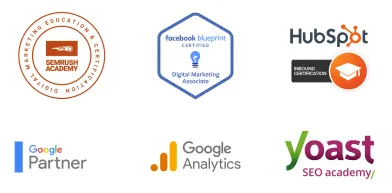TO LEARN IS TO GROW
Learning Center
We do our research and publish our results. Should probably call this the Growing Center.


Facebook Ads: The Do’s and Don’ts
We list the do’s and don’ts of Facebook Ads to help you reach your target audience in the “cheapest” way possible.
Facebook Ads is one of the most powerful paid advertising platforms because of its robust analytics, different settings that allow marketers to target a broad or niche audience, and widespread use. According to a 2021 global survey, social media users spent an average of two hours and 32 minutes a day, a 69% increase from 2012.
Running a Facebook Ads campaign generally requires minimal cost, provided that you use the platform “correctly.” On the other hand, no matter how trivial they appear, mistakes are expensive and damaging to your brand.
To help you avoid some of the most common (and also most expensive) pitfalls of using Facebook Ads, leading digital marketing expert LOJO Marketing shares some do’s and don’ts you have to keep in mind:
The Do's and Don'ts of Facebook Ads
Don't ignore mobile users
Do you know that an ad copy may look good on a desktop but not on a smaller mobile screen, which may cut off the headline? Visually speaking, there are many ways you can ruin your Facebook Ads.
The general rule of thumb is to create separate Facebook mobile ad campaigns and desktop campaigns. The idea is that mobile ads, because of the limited screen size, require more tweaking to make the ad copy easy to understand even at first glance.
Pro Tip:
Experiment with the "Call Now" button.
Optimize your images (make sure that it conveys a quick, easy-to-digest message despite being shown on a smaller screen).
Test Facebook Carousel Ad, which allows advertisers to show multiple links and images in the same ad copy.
Do manual placements and adjustments
If you’re pressed for time, you might be tempted to put your campaign on auto-pilot mode. After all, Facebook uses an IA that optimizes the ad set for you. For example, if your mobile ad is performing better than your desktop, it will re-channel your budget to the platform that brings in the most clicks.
However, Facebook’s AI is not as intelligent as you might think. While your mobile ad might be bringing in more traffic to your website, the algorithm doesn’t take into account that desktop users have the higher purchase intent, or to be exact, they are the ones driving the sales.
Do know your target audience

Your target audience is based on geographical location, online behaviors, and demographics, which include gender, education, religion, marital status, income level, etc.
Consumers who fall into these groups generally value the same products and services, making it easier for advertisers to focus on those with the highest purchase intent.
Don't rule out a broad audience
Facebook is often noted for its impressive targeting capabilities. In fact, you can even target your competitors’ clients and followers.
In many cases, it’s more cost-effective to target a niche market than a broader audience. However, there are some instances when it is acceptable or even ideal to slightly deviate from this standard rule.
Many businesses find success by targeting a broader audience and narrowing it down gradually. For example, a new restaurant in Sacramento can benefit from a “broad ad” that targets anyone between 18 and 60 years old in the city.
In general, a “broad ad” is great for spreading brand awareness, making it an ideal approach if you’re new to Facebook Ads, you just recently started a business, or you need to collect information about your potential customers.
However, it is almost always better to move away from broad ads once you have collected information or your business has become more established. Remember, specific ads are more useful for converting customers.
Don't bloat your ads with texts
Facebook has conducted a survey showing that the best-performing ads contain images with no or very little text. The company even released its recommended guidelines called the “20% rule,” which states that your text should only account for 20% (or less) of the ad.
Simply put, rely more on images and use ad copy that follows the “KISS” principle–i.e., keep it short and simple.
Do set the "right" budget

Setting the right budget is arguably the trickiest part of running your Facebook Ads. After all, digital marketing is not an exact science, so your success boils down to how fast you learn from your errors.
In order to find success in Facebook Ads, having a large amount of patience and being quick to adapt are far more important than having lots of knowledge.
As a guideline, set your budget low as you run your first campaigns, usually between $1 and $4 a day. The goal here is to see which ads are good at converting before gradually increasing your ad spending.
Do edit and proofread your ad copy
Grammatical errors can make even the most reputable business look sketchy and unprofessional. Thus, it is a sacrosanct rule to edit and proofread your ad copy before publishing it on Facebook Ads.
Through rigorous editing and proofreading, you can also enhance the clarity of your message, prompting readers to take the desired action.
Don't just randomly select your Facebook ad format
As of this writing, the Facebook Ad formats include the following:
Images
Videos
Carousels. They show up to ten images or videos in a single ad, each with its own link.
Instant Experience. When a user taps your ad, it shows him a full-screen experience.
Collections. They feature multiple products and open as an Instant Experience.
Take note that your Facebook Ad format affects the placements where your ads appear, whether on Facebook, Messenger, Instagram, or Audience Network.
Also, certain ad formats appeal more to specific demographics. In general, younger consumers prefer 5-10 second funny videos, while the older audience goes for more “explanatory” videos that are not longer than 30 seconds.
Built for Growth. Backed by 25 Years of Trust.
For over two decades, LOJO has been a trusted partner to hundreds of businesses just like yours. Whether working directly with owners, managers, teams, or boards of directors, our goal remains the same: to be a reliable and results-driven asset to your business.
Over the years, we’ve carefully built a team of experts—each selected for their unique skills, strengths, and personalities. Our clients choose LOJO because they know we genuinely care about their success.
And after 25 years of helping businesses grow, we’re more committed than ever.



Built for Growth. Backed by 25 Years of Trust.
For over two decades, LOJO has been a trusted partner to hundreds of businesses just like yours. Whether working directly with owners, managers, teams, or boards of directors, our goal remains the same: to be a reliable and results-driven asset to your business.
Over the years, we’ve carefully built a team of experts—each selected for their unique skills, strengths, and personalities. Our clients choose LOJO because they know we genuinely care about their success.
And after 25 years of helping businesses grow, we’re more committed than ever.




Matthew Rogers, President
iProspect Check
After spending several months reviewing multiple proposals from several different companies we engaged LOJO to develop a new website that represents our company effectively. We worked initially with Stephen Platte who helped create the scope of the project. Stephen was knowledgeable and always followed up with me on time and as promised.
He "closed the deal" for LOJO with his professionalism, service orientation and easy going approach. Once we signed the contract we were introduced to Jay Kelly who would be the creative lead for LOJO. This was the most challenging part of the project for my company, as there was no shortage of ideas from our side. Jay managed the project flawlessly, and once we had all agreed to the design, Jay introduced us to Eric.
Eric Lay is one of the founders of LOJO. Eric took the design we had developed and brought it to life. We delivered content as quickly as he requested it. Eric kept the project on task and we responded by exceeding every deadline for content. In turn, once provided, literally not a day went by that Eric didn't add the content and take the next step. In just a few weeks we launched our new website. Eric is a pleasure to work with.
His positive attitude and consultative approach really enhanced the experience and made a big difference for us in the outcome of our project. We would welcome you to visit our website to take a look at the quality work of LOJO. We are very pleased with LOJO and look forward to working with them in the future as we pursue an aggressive SEO strategy."
After spending several months reviewing multiple proposals from several different companies we engaged LOJO to develop a new website that represents our company effectively. We worked initially with Stephen Platte who helped create the scope of the project. Stephen was knowledgeable and always followed up with me on time and as promised.
He "closed the deal" for LOJO with his professionalism, service orientation and easy going approach. Once we signed the contract we were introduced to Jay Kelly who would be the creative lead for LOJO. This was the most challenging part of the project for my company, as there was no shortage of ideas from our side. Jay managed the project flawlessly, and once we had all agreed to the design, Jay introduced us to Eric.
Eric Lay is one of the founders of LOJO. Eric took the design we had developed and brought it to life. We delivered content as quickly as he requested it. Eric kept the project on task and we responded by exceeding every deadline for content. In turn, once provided, literally not a day went by that Eric didn't add the content and take the next step. In just a few weeks we launched our new website. Eric is a pleasure to work with.
His positive attitude and consultative approach really enhanced the experience and made a big difference for us in the outcome of our project. We would welcome you to visit our website to take a look at the quality work of LOJO. We are very pleased with LOJO and look forward to working with them in the future as we pursue an aggressive SEO strategy."

Matthew Rogers, President
iProspect Check
The team at LOJO were wonderful to work with. They are well organized and very patient as we worked through our marketing strategy and developed a well thought out and clear action plan at a reasonable price. We will definitely be back for our future campaign needs."

Jon Crosby, Founder
Dazil

